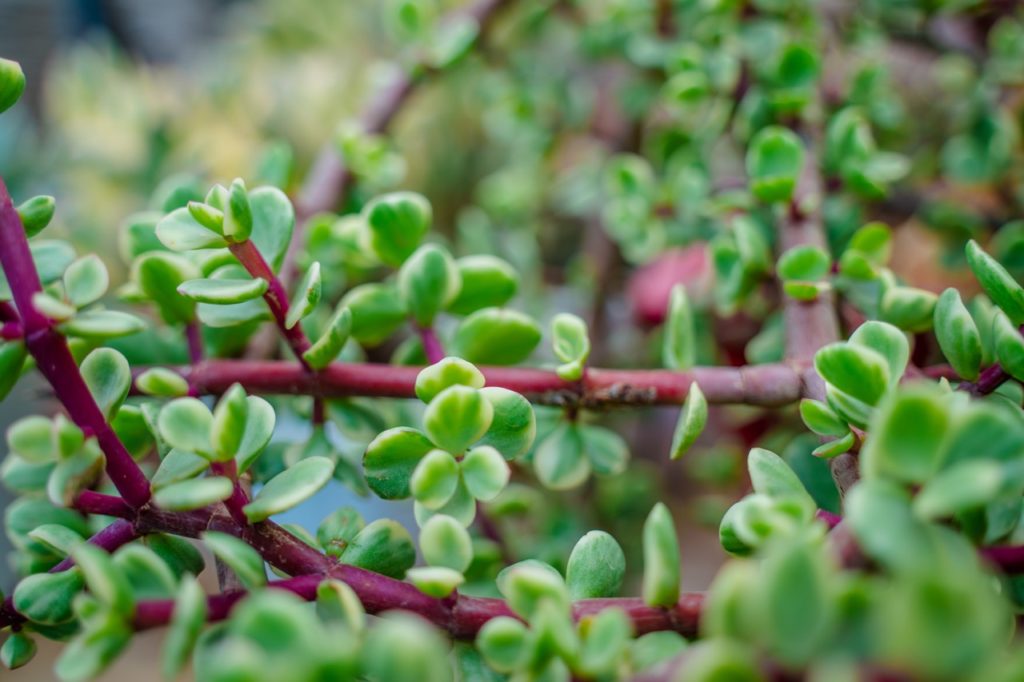
In the vast tapestry of botanical wonders, there exists a striking plant with vibrant red stalks and lush green leaves, captivating the senses with its distinctive appearance and versatile applications. This plant, known for its culinary and ornamental value, holds a special place in gardens and kitchens alike, offering both aesthetic beauty and nutritional benefits.
I. Introduction
Exploring the botanical marvel of a plant with red stalks and green leaves unveils a world of diversity and utility, enriching both the garden landscape and the dining table with its vibrant presence.
A. Overview of the Plant
This remarkable plant, characterized by its striking red stalks and contrasting green leaves, belongs to the botanical family known as {INSERT FAMILY NAME}. Renowned for its versatility and aesthetic appeal, it has garnered widespread popularity among gardeners and culinary enthusiasts.
B. Common Varieties
While several plant species exhibit red stalks and green leaves, some of the most notable varieties include {INSERT COMMON VARIETIES}, each with its unique characteristics and growing requirements.
C. Cultivation and Habitat
Plants with red stalks and green leaves thrive in diverse climates and soil conditions, ranging from temperate regions to subtropical environments. They are cultivated in home gardens, commercial farms, and botanical institutions, providing both ornamental beauty and culinary bounty.
II. Botanical Characteristics
Understanding the botanical attributes of plants with red stalks and green leaves sheds light on their unique features and growth patterns.
A. Red Stalk
The striking red coloration of the stalks is attributed to the presence of anthocyanin pigments, which impart hues ranging from deep crimson to vibrant scarlet. This pigmentation is influenced by environmental factors such as sunlight exposure, temperature fluctuations, and soil composition, as well as genetic variations within plant species.
- Anthocyanin Pigmentation
Anthocyanins, a group of water-soluble pigments found in plant tissues, are responsible for the red, purple, and blue colors observed in various fruits, vegetables, and flowers. These pigments exhibit antioxidant properties and are believed to provide protective benefits against environmental stressors.
- Environmental Factors
Sunlight exposure plays a crucial role in stimulating anthocyanin production in plant tissues, with increased UV radiation leading to higher pigment concentrations. Temperature fluctuations, particularly cooler temperatures during the growing season, also contribute to the development of vibrant red hues in the stalks.
- Genetic Variations
Genetic factors influence the intensity and distribution of anthocyanin pigmentation in plant tissues, with certain varieties exhibiting deeper red hues and others displaying lighter shades. Breeders and horticulturists have selectively bred plants to enhance desirable traits, resulting in a diverse array of red-stemmed cultivars.
B. Green Leaves
In contrast to the vivid red stalks, the green leaves of these plants serve essential functions in photosynthesis and nutrient assimilation.
- Photosynthesis
Green leaves contain chlorophyll, the primary pigment responsible for capturing light energy during photosynthesis. This process enables plants to convert carbon dioxide and water into carbohydrates, providing energy for growth and metabolism.
- Chlorophyll Content
Chlorophyll molecules absorb light energy from the sun, primarily in the blue and red regions of the spectrum, while reflecting green wavelengths, giving leaves their characteristic color. The abundance of chlorophyll in green leaves facilitates efficient photosynthetic activity, contributing to plant vigor and productivity.
- Leaf Structure
The structure of green leaves is optimized for photosynthetic efficiency, with specialized tissues and cell structures that maximize light capture and gas exchange. Features such as stomata, chloroplasts, and mesophyll cells play essential roles in facilitating the exchange of gases and nutrients between the plant and its environment.
C. Growth Patterns
Plants with red stalks and green leaves exhibit diverse growth patterns, ranging from compact clumps to sprawling vines, depending on the species and growing conditions.
III. Culinary and Medicinal Uses
The culinary and medicinal properties of plants with red stalks and green leaves make them valuable additions to both kitchen gardens and herbal apothecaries.
A. Culinary Applications
Plants with red stalks and green leaves offer a bounty of edible parts, including stems, leaves, and occasionally flowers, that are utilized in various culinary creations.
- Edible Parts
The tender young stems and leaves of these plants are harvested and incorporated into salads, stir-fries, soups, and stews, adding color, texture, and flavor to dishes. Some varieties are prized for their crisp texture and mild flavor, while others boast a more robust taste and are used as flavoring agents or condiments.
- Flavor Profile
The flavor profile of plants with red stalks and green leaves varies depending on the species and growing conditions, with some exhibiting tart or tangy notes reminiscent of rhubarb, while others possess a mild, earthy taste with subtle herbal undertones. The stems may be cooked or consumed raw, depending on personal preference and culinary traditions.
- Cooking Techniques
Plants with red stalks and green leaves lend themselves to a variety of cooking techniques, including steaming, sautéing, blanching, and braising, each of which enhances their unique flavors and textures. They can be paired with complementary ingredients such as garlic, ginger, citrus, and herbs to create flavorful and nutritious meals.
B. Medicinal Properties
In addition to their culinary value, plants with red stalks and green leaves possess medicinal properties that have been utilized for centuries in traditional herbal medicine practices.
- Nutritional Content
These plants are rich in vitamins, minerals, antioxidants, and phytochemicals that contribute to their therapeutic effects and nutritional benefits. They are particularly high in vitamin C, vitamin K, folate, potassium, and dietary fiber, supporting immune function, bone health, cardiovascular health, and digestive health.
- Health Benefits
Consuming plants with red stalks and green leaves has been associated with various health benefits, including improved digestion, enhanced immune function, reduced inflammation, and increased energy levels. The antioxidants present in these plants help neutralize free radicals and protect against oxidative stress, reducing the risk of chronic diseases such as heart disease, cancer, and diabetes.
- Traditional Remedies
Plants with red stalks and green leaves have been used in traditional herbal medicine to treat a wide range of ailments, including digestive disorders, respiratory conditions, menstrual irregularities, and skin disorders. Herbal preparations such as teas, tinctures, poultices, and infusions are employed to harness their therapeutic properties and promote health and well-being.
C. Cultural Significance
Plants with red stalks and green leaves hold cultural significance in various culinary traditions and herbal medicine practices, symbolizing vitality, abundance, and vitality.
IV. Growing and Caring Tips
Cultivating plants with red stalks and green leaves in home gardens requires attention to their specific growing requirements and maintenance needs.
A. Soil and Sun Requirements
These plants thrive in well-drained soil with ample organic matter and a slightly acidic to neutral pH range. They prefer full sun to partial shade exposure, with at least six hours of direct sunlight per day to promote healthy growth and vibrant coloration.
B. Watering and Fertilization
Consistent moisture is essential for the growth and development of plants with red stalks and green leaves, particularly during the growing season. Adequate irrigation, supplemented by mulching and organic fertilization, helps maintain soil moisture levels and supply essential nutrients for robust growth and productivity.
C. Pruning and Maintenance
Regular pruning and maintenance are necessary to ensure the health and vitality of plants with red stalks and green leaves, particularly to remove dead or damaged foliage, control for pests and diseases, and promote air circulation and light penetration. Mulching and weed management also contribute to the overall health and aesthetics of the garden, reducing competition for nutrients and water.
V. Conclusion
Plants with red stalks and green leaves embody the beauty and bounty of the natural world, offering both aesthetic appeal and practical utility in gardens and kitchens alike.
A. Versatility and Benefits
From their striking visual appeal to their culinary and medicinal properties, these plants enrich our lives in myriad ways, providing nourishment, beauty, and healing to body, mind, and spirit.
B. Integration into Home Gardens
With proper care and cultivation, plants with red stalks and green leaves can thrive in home gardens, serving as focal points of beauty and sources of sustenance for years to come.
C. Final Thoughts on {Plant With Red Stalk And Green Leaves}
As we marvel at the vibrant hues and lush foliage of plants with red stalks and green leaves, let us cultivate a deeper appreciation for their unique qualities and the vital role they play in sustaining life and promoting health and well-being in our gardens and beyond.


